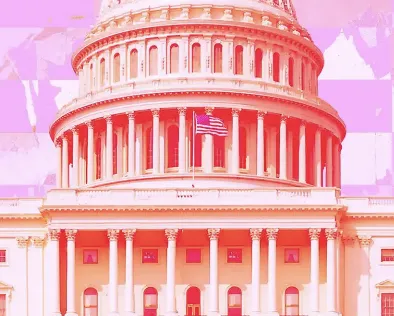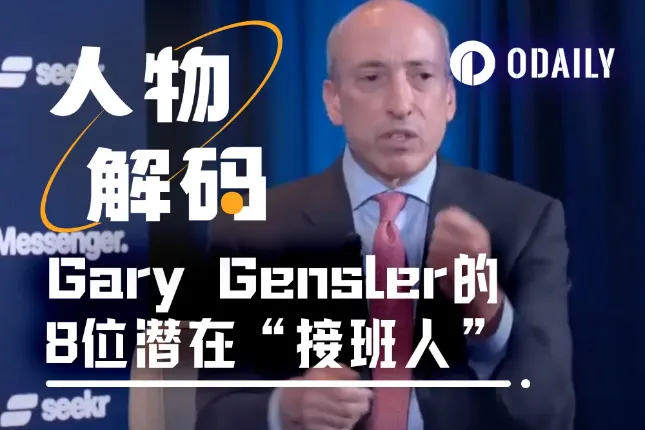Satoshi Nakamoto has changed his approach.
Written by: Liu Jiao Chain
Today is the day of the U.S. elections. Last night, the internal reference "11.4 Jiao Chain Internal Reference: U.S. Elections, New Money vs. Old Money, Who Will Prevail?" summarized some information from both sides. Affected by the retreat of the "Trump trade," BTC briefly retraced to around the 30-day moving average of 66.9k overnight.
The U.S. election is a form of voting democracy. But can voting really achieve democracy? Unfortunately, it cannot. Even excluding operational issues like ballot fraud and illegal voting, it can be mathematically proven that voting does not achieve democracy. This is precisely the research outcome of Kenneth J. Arrow, who won the Nobel Prize in Economics in 1972.
What is democracy? Democracy is a method by which a group of people makes a collective choice or collective decision through a system, and that collective decision should align with the interests of the largest majority within that group.
It can be seen that democracy is, first and foremost, bounded. American democracy is only meant to serve the interests of Americans. But does it potentially harm the interests of non-Americans on the planet? Of course, it might.
Secondly, the purpose of democracy is to make collective decisions, or to make a specific collective choice. Voting is a means and method to achieve this purpose.
Finally, the goal of democracy is interest (not morality or anything else), and the final outcome should benefit the largest majority.
Even if we do not consider whether the decisions made collectively by a group truly benefit the majority, just in the step of making a collective choice, Arrow proved that there is no design of a voting system that can truly yield a result.
At the end of Arrow's report "General Economic Equilibrium: Purpose, Analytic Techniques, Collective Choice" presented at the Nobel Prize ceremony in Stockholm in 1972, he cited the voting paradox proposed by the 18th-century French scholar Condorcet as a vivid example.
The example is as follows:
There are three people: Zhang San, Li Si, and Wang Wu, who agree to have lunch together. Their options are three places: Huangmen Chicken Rice, Domino's Pizza, and KFC Burgers.
Zhang San's preference is: Huangmen Chicken > Pizza > Burger
Li Si's preference is: Pizza > Burger > Huangmen Chicken
Wang Wu's preference is: Burger > Huangmen Chicken > Pizza
Please design a voting system that allows the group of three to select the best option through democratic voting.
Anyone who has passed middle school math can find that such a democratic voting system does not exist!
If the voting result is Huangmen Chicken: only Zhang San is satisfied. Li Si and Wang Wu both feel that choosing Huangmen Chicken is worse than choosing Burger!
If the voting result is Pizza: only Li Si is satisfied. Zhang San and Wang Wu both feel that choosing Pizza is worse than choosing Huangmen Chicken!
If the voting result is Burger: only Wang Wu is satisfied. Zhang San and Li Si both feel that choosing Burger is worse than choosing Pizza!
It can be seen that even in such a simple system, democracy cannot be realized. No matter how you choose, the vast majority of people are dissatisfied.
This is just three people choosing what to eat. What if it were three hundred million people choosing a president? Could there be any system that guarantees that the voting election will definitely achieve a truly democratic decision—i.e., that the elected president benefits the largest majority?
More complex designs will only obscure this fundamental problem and will absolutely not solve it. Because this is a problem of mathematics and logic, not something that can be resolved through system design.
Arrow generalized and formalized this problem and provided a rigorous mathematical proof known as Arrow's impossibility theorem.
In democratic decision-making and voting systems, people often hope to make collective decisions based on the individual preferences of all members. However, Arrow's impossibility theorem indicates that any attempt to aggregate individual preferences to form a social preference cannot simultaneously satisfy the following five seemingly reasonable conditions:
Non-dictatorship: No single person can completely determine the social preference. In other words, social preference should not simply equal the preference of any individual; collective decisions should reflect the opinions of multiple members.
Pareto Efficiency: If everyone prefers A over B, then the social preference should also reflect that A is preferred over B. This is a basic rationality requirement for collective decision-making.
Independence of Irrelevant Alternatives (IIA): The social preference between A and B should only depend on people's preferences for A and B, and should not be influenced by other options. This means that adding an irrelevant option C should not change the ranking of A and B.
Transitivity: If the social preference is that A is preferred over B, and B is preferred over C, then the social preference should satisfy that A is preferred over C. That is, collective preferences must be consistent, without cyclical preferences.
Unrestricted Domain: All possible combinations of individual preferences should be allowed, meaning that regardless of how people's preferences are, the rules should be applicable.
Arrow proved that when there are three or more candidates, no preference aggregation mechanism can simultaneously satisfy the above five conditions. In other words, either one of the conditions must be abandoned, or one must accept an imperfect decision-making system (for example, accepting a "dictator" to make decisions, or allowing the system to not meet consistency and other conditions).
Arrow's impossibility theorem indicates that in the pursuit of fair, reasonable, and consistent collective decision-making, there are unavoidable contradictions. This theorem has profound implications for political science, economics, social choice theory, and voting system design. It reveals the inherent limitations of democratic decision-making, namely that we may not be able to find a completely fair decision-making mechanism to aggregate individual preferences.
Arrow's impossibility theorem reveals the fundamental paradox in collective decision-making, which is that under reasonable conditions, it is impossible to design a perfect social choice rule. It tells us that any collective decision-making mechanism must make trade-offs between fairness, consistency, and rationality.
In the Bitcoin white paper published by Satoshi Nakamoto in 2008, the issue of majority decision-making is discussed. This is in section 4, "Proof of Work." The text states:
"Proof of work also solves the problem of determining representation in majority decision-making. If a one-IP-address-one-vote system determines the majority, then that system could be subverted by anyone capable of allocating many IPs. Proof of work is essentially one CPU one vote. Majority decision-making is represented by the longest chain, which has the greatest amount of work put into it. If the majority of CPU power is controlled by honest nodes, the honest chain will grow the fastest and outpace any competing chain. To modify a past block, an attacker would have to redo the proof of work for that block and all subsequent blocks, then catch up and surpass the work of the honest nodes. We will later show that as subsequent blocks are added, the probability of a slower attacker catching up will decrease exponentially."
What Satoshi Nakamoto refers to as "one CPU one vote" actually means one unit of computational power one vote. As for how much computational power that is, it is essentially the proportion of a node's computational power to the total computational power of the network.
The consistency problem in distributed systems is also a collective choice problem. The difference is that the collective choice is made by computers automatically executing the will of their owners.
Traditional solutions are logical voting systems, such as BFT (Byzantine Fault Tolerance) algorithms. The FLP impossibility theorem has already blocked this path.
Satoshi Nakamoto completely abandoned these dead-end old paths. The Bitcoin white paper does not mention any of those traditional distributed algorithms, nor does it cite any related references, as if they do not exist.
In section 4 of the white paper, Satoshi Nakamoto points out that voting by "headcount" (IP address) will inevitably encounter the problem of fake votes. Just like in this U.S. election, international students without voting qualifications easily cast votes. Many people even revealed that they had previously voted using the names of cats and dogs.
In distributed systems, there is a term called "Sybil attack," which refers to identity spoofing attacks. The term "Sybil" is a metaphor for splitting.
Can the U.S. election system withstand Sybil attacks? It seems to have vulnerabilities.
Some might say that the benefits of fake voting are minimal, while the potential losses from committing a crime are significant, so no one would do such a thing. However, if one side involved in the competition organizes a fake vote attack, it could be highly beneficial.
Others might suggest that if the entire U.S. had a national ID system and ballots were named, wouldn't that solve the problem? However, a national ID and named voting would bring about other issues that hinder democracy. Moreover, the unified issuance and certification of IDs would mean introducing a centralized power department.
For the Bitcoin system, to achieve complete decentralization, such centralized solutions cannot be adopted.
Satoshi Nakamoto changed his approach and allowed everyone to vote using "proof of work."
In simple terms, the more work someone does, the greater their voice (voting power). Note that it is not about who has more coins (more money), but who has more voting power.
This is akin to what Marx and Engels said about empowering the working class. It allows the most representative group of advanced productive forces to hold the greatest power.
Why? Because coin holders can always cut their losses and run. Once miners deploy their mining machines, shutting them down turns them into scrap metal. This is also why the basic support of a country is the working class and farmers, rather than capitalists.
Of course, in reality, measuring and comparing the amount of work done is difficult due to differences in division of labor, but for the Bitcoin system, it is much simpler; all are the same hash calculations, which are easy to measure and compare.
The voting by proof of work, this system of productive democracy, or computational power democracy, results in what Satoshi Nakamoto referred to as the "longest chain."
"In an email dated November 8, 2008, Satoshi Nakamoto wrote: 'The proof of work voting by CPU power must have the final say.' Making everyone believe that the longest chain (the chain with the greatest accumulated computational power) is the valid chain is the only way to establish global consensus." — Chapter 11, Section 51 "Computational Power Democracy" from "A History of Bitcoin"
It can be seen that the Bitcoin system is a "one-party system"—there is only one longest chain, rather than a "two-party system" like that of the United States—where choices are made between two equal chains. Otherwise, it would lead to "brain split." The longest chain is the system's Schelling Point (default consensus, proposed by American economist Thomas Schelling).
Any node that contributes computational power to the system can gain the right to propose new blocks and extend the longest chain. The extension of the longest chain is, in fact, also an acknowledgment and confirmation of the longest chain.
All other nodes contributing computational power can recognize the extended longest chain by verifying and accepting this new block.
As long as more than half of the computational power recognizes the extended longest chain, this becomes the new global consensus.
At the end of Chapter 11, Section 51 "Computational Power Democracy" from "A History of Bitcoin", Jiao Chain summarizes as follows:
"Miners achieve adherence to the longest chain principle through computational power voting for a hundred years without wavering, but miners cannot alter any consensus rules. The consensus rules are defined by the open-source code of Bitcoin Core, and the power to modify them is in the hands of the development team. However, the development team cannot act arbitrarily and destroy the consensus rules at will, because miners and users have the right to nominate a new development team to fork the code (copy a portion of the open-source code for separate maintenance). Ultimately, the decisive power still lies with the vast number of coin holders; they decide which coins to sell and which coins to buy, effectively voting with their feet. Water can carry a boat, but it can also capsize it. However, at the same time, coin holders are a 'mob'; they only have the passive freedom to come and go at will, without the active freedom or power to compel the development team to change the rules.
'Let those with freedom have no power, and those with power have no freedom. They can come and go at will, but no one can act arbitrarily. This is the computational power democracy of Bitcoin.'"
免责声明:本文章仅代表作者个人观点,不代表本平台的立场和观点。本文章仅供信息分享,不构成对任何人的任何投资建议。用户与作者之间的任何争议,与本平台无关。如网页中刊载的文章或图片涉及侵权,请提供相关的权利证明和身份证明发送邮件到support@aicoin.com,本平台相关工作人员将会进行核查。




